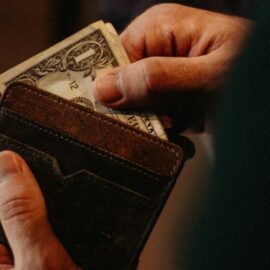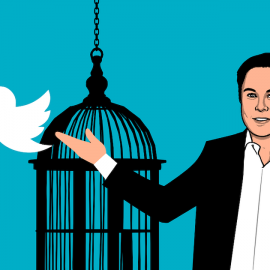
This is a free excerpt from one of Shortform’s Articles. We give you all the important information you need to know about current events and more.
Don't miss out on the whole story. Sign up for a free trial here .
Wondering why you’re suddenly tipping more? What’s tipflation? How is the legacy of tipping connected to today’s tipping fatigue?
Tipping has a long history in the US, and these days it may feel like every time you turn around you’re being asked to tip—and to tip more than you’d like. This phenomenon is called tipflation and experts say it’s mostly been driven by the pandemic and the use of tablets for payment.
Read on to learn about tipflation, based on a historical perspective and current analysis of the issues.
Is Tipflation Here to Stay?
If you live in the US, it may feel like every time you turn around you’re being asked to tip—and pressured to tip more than you’d like. It’s not your imagination, it’s tipflation. Tipping’s on the rise in a growing number and array of US businesses, and many Americans have mixed feelings about it.
How did tipping start in the US? What’s behind the recent tipping explosion? Is tipflation here to stay? We’ll examine experts’ varied viewpoints on these questions.
The History of Tipping
First, let’s explore the legacy of tipping in America to better understand how tipflation could take hold in US culture. Some experts assert that the word “tip” stands for ”To Insure Promptness,” though others call this a myth. There is broad agreement, however, that tipping emerged in medieval Europe—with slightly different views on its evolution:
- Some say that tipping began with wealthy patrons paying servers extra money to quell their resentment over having to serve people enjoying their food and beverages a little too heartily.
- Others argue that the practice started with masters giving servants extra money for outstanding performance—a custom that wealthy Americans vacationing in Europe in the 1850s and 1860s learned of and, longing to be aristocrats, adopted once back in the US.
But tipping took root in the US when enslaved Americans were set free at the end of the Civil War. Experts say the legacy of slavery turned the tip from a “bonus” into the “wage” workers see today, evolving as follows:
- 1915: Six US states abolished tipping—but tipping remained popular in the South.
- 1926: All laws ending tipping were repealed.
- 1938: Federal legislation required employers only to pay tipped workers a wage that, when combined with tips, added up to the federal minimum wage ($0.25).
- 1991: The federal government established a minimum wage for tipped workers of $2.13—a number that holds today.
- 2023: It remains legal in 43 US states to pay tipped workers less than the standard minimum wage ($7.25) because, presumably, tips will make up the difference.
What Is Tipflation—and What’s Behind It?
Tipflation, and its partner, ”tip creep,” are recent phenomena in which US customers are tipping more and in more non-traditional places, including:
- In jobs where workers are paid the standard federal minimum wage or more, like baristas and drivers.
- For services like GoFundMe, which requests tips from donors to operate the platform (while neglecting to mention its automatic service fee deduction from donations).
Experts attribute tipflation to two key factors:
Factor 1: The pandemic. When Covid-19 shuttered much of the economy and fear of the virus ran rampant, Americans began tipping service industry workers more—and tipping for services they hadn’t before:
- Customers started tipping delivery workers as much as 30%.
- Remote transactions with a tipping option increased from 46%, pre-pandemic, to 86% in 2022.
- Struggling restaurants began asking customers to tip for food pickups to supplement lost income.
Factor 2: Tablets. Another reason tipflation has taken hold is that more businesses are processing payments with touchscreen tablets that prompt customers to choose from three different tipping options—often in the range of 15%, 20% or 25% or higher. Experts say the tablets are a strong tip shaming strategy because:
- Tip button options are large and often publicly visible to the worker helping the customer and others, pressuring customers to tip—and tip more than they’d like.
- They force customers to either tip or opt out of tipping. Unlike counter tip jars, tablet tip options can’t be ignored or “forgotten.”
- The devices often prompt customers to enter a tip before services are rendered.
Will Tipflation Drop Off?
Experts say tipflation is already waning because Americans who feel they did their part to keep restaurants afloat during the pandemic and now confront high inflation are tired of being badgered for more money at every turn. The subsequent tip fatigue many feel is leading to a tip backlash—where customers tip less or not at all.
Experts say that while tip fatigue is understandable, the backlash it inspires will most harm restaurant servers, who rely on tips to survive.

Want to fast-track your learning? With Shortform, you’ll gain insights you won't find anywhere else .
Here's what you’ll get when you sign up for Shortform :
- Complicated ideas explained in simple and concise ways
- Smart analysis that connects what you’re reading to other key concepts
- Writing with zero fluff because we know how important your time is






